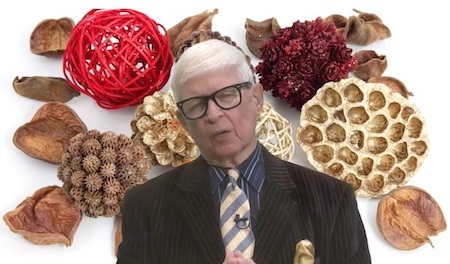Marc Abrahams's Blog, page 193
March 5, 2018
The analgesic effects of dancing in synch (study)
Can dancing to PSY’s ‘Gangnam Style’ in sync with other dancers act as a kind of ‘analgesic ’ – by raising your threshold to pain? A 2016 research project from the Department of Experimental Psychology, at the University of Oxford, UK, suggested that the answer might be ‘Yes’.
A suite of somewhat painful [*see notes] experiments with 94 participants from Oxford showed that :
“ […] synchronising full-body dance movements increased strangers’ self-reported feelings of social closeness to one another and elevated pain thresholds. These effects arose when participants synchronised with each other and the music, rather than merely with the music.”
See: Silent disco: dancing in synchrony leads to elevated pain thresholds and social closeness in Evolution & Human Behavior, September 2016, Volume 37, Issue 5, Pages 343–349. A full copy of which may be found here.
Notes ;
[1] The study didn’t examine any possible differences in analgesic properties of the various music tracks used in the experiments – which were :
“ ‘I feel so close to you right now’ by Calvin Harris; ‘Lady Marmalade’ by Christina Aguilera, Lil’ Kim, Mya and Pink; ‘Memories’ by David Guetta feat Kid Cudi; ‘Merengue’ unknown artist; ‘Wake me up before you Go – Go’ by Wham!; ‘Gangnam style’ by Psy; ‘Sexy and I know it’ by LMFAO; ‘Little Bad Girl’ by David Guetta.”
[2] “Pain threshold was measured by inducing ischemic pain through the inflation of a blood pressure cuff on the participant’s upper arm and noting the pressure sustained”

March 4, 2018
How to give a lecture: Burton Klein Lectures About Potpourri
Of the many ways to lecture, the Burton Klein way is especially filled with facts and spellings and efficient delivery thereof. Ingest, if you will, this video of Burton Klein lecturing on the topic “Potpourri.” Count the facts. Count the spellings of words. Count yourself lucky for being exposed to Burton Klein lecturing on the topic “Potpourri.” It is a mere 29 minutes and 23 seconds in duration.

And here’s a one-minute tour of the mind of Burton Klein:
Is it possible to see Burton Klein speak in person? Reportedly yes, that is a possibility.
(Thanks to Leigh Buchanan for bringing Burton Klein to our attention.)

March 3, 2018
Scientific Salami Slicing: 33 Papers from 1 Study
The Neuroskeptic blog looks at how how a super-masterful sausage slicer makes sausage slices:
Scientific Salami Slicing: 33 Papers from 1 Study
“Salami slicing” refers to the practice of breaking scientific studies down into small chunks and publishing each part as a separate paper.
Given that scientists are judged in large part by the number of peer-reviewed papers they produce, it’s easy to understand the temptation to engage in salami publication. It’s officially discouraged, but it’s still very common to see researchers writing perhaps 3 or 4 papers based on a single project that could, realistically, have been one big paper.
But I’ve just come across a salami that’s been sliced up so thinly that it’s just absurd. The journal Archives of Iranian Medicine just published a set of 33 papers about one study. Here they are – this is a rather silly image, but it’s a silly situation….

March 2, 2018
People Who Have Voluntary Control of Goosebumps
Of a sudden, there’s goosebump-raising research about people who can manage, using only mental means, to bring about their own goosebumps.
It’s described in the study “The Voluntary Control of Piloerection,” James A.J. Heathers [pictured here], Kirill Fayn, Paul J. Silvi, Niko Tiliopoulos, and Matthew S. Goodwin, PeerJ, March 1, 2018.
The authors, at Northeastern University, Katholieke Universiteit Leuven, the University of North Carolina at Greensboro, and the University of Sydney, report:
Autonomic systems in the human body are named for their operation outside of conscious control. One rare exception is voluntarily generated piloerection (VGP) – the conscious ability to cause goosebumps – whose physiological study in scientific history is confined to three single-individual case studies. Almost nothing is known about the physiological nature and emotional correlates of this ability. The current manuscript investigates the physiological, personality, and emotional phenomenology of a sample of thirty two individuals capable of VGP…. These preliminary findings suggest that this rare and unusual physiological ability has strong emotional and personality correlates….
The links between piloerection, the experience of chills, and existing personality correlates tentatively imply that individuals with voluntary control over these symptoms tend to experience states of being moved, touched, and/or awed more frequently…
BONUS: Lead author Heathers has done extensive research into the reliability and reality of research studies published by 2007 Ig Nobel Nutrition Prize winner Brian Wansink.

March 1, 2018
The physiological underpinnings of aversion to images of clusters of holes (new study)
When you look at the photo above, perhaps you see :
1) A delicious-looking much-loved chocolate bar renowned for its unique bubbly texture.
or
2) A nightmarish and disgusting depiction of tightly clustered holes.
If your reaction leans more towards the latter, it’s possible that you are suffering from trypophobia. Which is (currently being) defined as “an aversion to a cluster of innocuous holes”. Over the past few years, there has been some debate about whether trypophobia really exists, so researchers Vladislav Ayzenberg, Meghan R. Hickey, and Stella F. Lourenco of the Department of Psychology, Emory University, Atlanta, US, decided to perform a set of experiments. The research team showed participants pictures of snakes and spiders, along with possible trypophobiagenic images (plus neutral objects as a control). At the same time they measured the pupil size of the participants – pupil dilation is (amongst other things) a reliable fear-response indicator.
“Across two experiments, we found greater pupillary constriction to holes than to snakes and spiders, as well as different types of neutral images. Importantly, this effect could not be explained by arousal or low-level visual properties (though more research would be useful to ensure that spatial frequency alone does not account for pupillary responses). These findings are consistent with involvement of the parasympathetic nervous system when viewing images of holes and is suggestive of a disgust, not fear, response to these images. “
Although the results suggest that the “specific emotional response may reflect cognitive appraisal of image content”, there is currently no broadly accepted explanation as to why such a specific response to images of clusters of holes may have evolved in humans.
See: Pupillometry reveals the physiological underpinnings of the aversion to holes in the journal PeerJ 6:e4185, January 4, 2018.
BONUS Assignment [optional] : Suggest more images (other than those used in the study) that might be used to elicit trypophobic responses in future studies.
Note: The picture of the AERO® Milk Bar, which was not used in the study, is provided courtesy of Evan-Amos at Wikipedia

February 28, 2018
Washing machines for dogs, and the power of the Ig Nobel Prize
The sometimes unexpected power of winning an Ig Nobel Prize, as reported in El Pais [here is an auto-translation from the Spanish]:
“I’m not surprised that we have more Nobel laughter than really”
Spain triumphs in the Ig Nobel in recent years with peculiar studies and inventions
… But it is important not to underestimate the power of Ig Nobel, as explained by Eduard Segura, who won it in 2002 in the Hygiene category for his invention: a pet washing machine. “We were surprised by the global impact, but all of that free publicity was fundamental for us, it could be a joke prize, but it has fixed our way of life,” he says. This engineer affirms that he has sold since then some 400 machines -whose two models cost 17,000 and 7,000 euros- in a business for which six people work. And that everything is due to the prize….

“We did not know the awards and when we saw the videos we thought we were too serious for that”, explains Margarita Garriga, head of the award-winning team made up of five researchers from IRTA (Agrifood Research and Technology Institute). “We felt uncomfortable and we did not go,” says Garriga, who nevertheless acknowledges that the experience would have been spectacular: “Now I regret not having gone to Harvard.” The study for which they were awarded in Nutrition, the thesis of Raquel Rubio, proposed the use of bacteria present in the feces of babies to ferment sausages.

February 26, 2018
That glop of computer code
That glop of computer code you see on the left part of our web site—the space that ordinarily shows a menu—appeared suddenly. We are tracking down what caused this delightful glitch, and hope to repair it ASAP.
* * *
For now, here are direct links to the list of all Ig Nobel Prize winners, and to our events schedule.

Budgie Mirror Mystery (study)
“Mirrors or mirror-related toys are often provided to Budgerigars as a substitute for social interactions with a plethora of different mirror toys available for purchase. Despite widespread use, exactly how mirrors relate to social behaviors (i.e. actions directed towards conspecifics within a flock) remains a mystery in Budgerigars.”
That’s to say, with reference to Budgerigars :
“ […] the relationship between mirror use and social behaviors is in need of elucidation.”
Elucidation comes in the form of a paper by Professor Matthew Anderson (and colleagues) entitled : ‘Budgie in the mirror: An exploratory analysis of social behaviors and mirror use in the Budgerigar (Melopsittacus undulatus)’in Behavioural Processes, Volume 135, February 2017, Pages 66-70.
Note: Professor Anderson has also extensively researched the as yet unexplained tendency for Caribbean flamingos to stand on one leg whilst resting.

February 25, 2018
That glop of computer code
That glop of computer code you see on the left part of our web site—the space that ordinarily shows a menu—appeared suddenly. We are tracking down what caused this delightful glitch, and hope to repair it ASAP.
* * *
For now, here are direct links to the list of all Ig Nobel Prize winners, and to our events schedule.

Predicting a Scientist’s Future Achievement Is Unpredictable?
The drive to measure—in advance!—success gets a whack in the computational knee, in this study about an Ig Nobel Prize (and also Nobel Prize) winner’s career:
 “Web of Science: Showing a Bug Today That Can Mislead Scientific Research Output’s Prediction,” Pablo Diniz Batista, Igor Marques-Carneiro, Leduc Hermeto de Almeida Fauth, and Marcia de Oliveira Reis Brandão, SAGE Open, January-March 2018, pp. 1-7. The authors, at the Brazilian Center for Research in Physics, explain:
“Web of Science: Showing a Bug Today That Can Mislead Scientific Research Output’s Prediction,” Pablo Diniz Batista, Igor Marques-Carneiro, Leduc Hermeto de Almeida Fauth, and Marcia de Oliveira Reis Brandão, SAGE Open, January-March 2018, pp. 1-7. The authors, at the Brazilian Center for Research in Physics, explain:
[We] observe that the bibliometric data collected from the Web of Science are not reliable instruments for comparing scientists’ performance because we detected a disregarded subtlety in the database…. To investigate how it can affect scientometric analysis, we have chosen to follow the career of the 2010 winner of the Nobel Prize in Physics, Andre Geim. This is not an arbitrary choice, because his example is an interesting one for [the] major objectives of this work….
In 2000, physicist Andre Geim was awarded the Ig Nobel for his experiments with frog’s levitation (Berry & Geim, 1997). It is important to consider that the Ig Nobel seems to be a kind of joke about scientific activity; however, it is able to provoke profound reflection on many aspects of science. In fact, its motto is “first make people laugh, and then make them think.” Moreover, 10 years later, Geim receives the Nobel Prize in Physics for the isolation of graphene (Novoselov et al., 2004)….
[Jorge] Hirsch proposes an index to predict the future of scientists’ merging quality and quantity into a single number. As far as we are concerned, this proposal of using mathematics probability or statistics, aiming to predict future research achievement, is not possible because the phase transition in a scientist’s career seems not to be predictable by an index or methodology as shown in this work through the example of the Nobel—and Ig Nobel—winner Andre Geim.
Here’s historic video of Andre Geim in his lab levitating a frog (and other things, too):

Marc Abrahams's Blog
- Marc Abrahams's profile
- 14 followers






